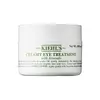What's inside
What's inside
 Key Ingredients
Key Ingredients

 Benefits
Benefits

 Concerns
Concerns

 Ingredients Side-by-side
Ingredients Side-by-side

Water
Skin ConditioningPersea Gratissima Oil
Skin ConditioningPropanediol
SolventCoco-Caprylate/Caprate
EmollientPolyglyceryl-3 Distearate
EmulsifyingPanthenol
Skin ConditioningGlycerin
HumectantBetaine
HumectantCetearyl Alcohol
EmollientTrehalose
HumectantPhytosterols
Skin ConditioningSorbitol
HumectantCeramide NP
Skin ConditioningCeramide AP
Skin ConditioningCeramide EOP
Skin ConditioningHyaluronic Acid
HumectantHydrolyzed Hyaluronic Acid
HumectantSodium Hyaluronate
HumectantSodium Hyaluronate Crosspolymer
HumectantOlea Europaea Fruit Oil
MaskingCholesterol
EmollientPhytosphingosine
Skin ConditioningInulin
Skin ConditioningCellulose
AbsorbentFructose
HumectantGlucose
HumectantMaltodextrin
AbsorbentHydrolyzed Glycosaminoglycans
HumectantTocopheryl Acetate
AntioxidantTetrasodium Glutamate Diacetate
Polyglyceryl-10 Stearate
Skin ConditioningPolyglyceryl-6 Behenate
Emulsion StabilisingAscorbyl Palmitate
AntioxidantXanthan Gum
EmulsifyingCellulose Gum
Emulsion StabilisingBiosaccharide Gum-1
HumectantParfum
MaskingSorbitan Oleate
EmulsifyingCitric Acid
BufferingTriethyl Citrate
MaskingGlyceryl Stearate Citrate
EmollientGlyceryl Stearate
EmollientBehenic Acid
CleansingBenzyl Glycol
SolventEthylhexylglycerin
Skin ConditioningRaspberry Ketone
MaskingSodium Cetearyl Sulfate
CleansingSodium Levulinate
Skin ConditioningSodium Benzoate
MaskingSodium Sulfate
Sodium Hydroxide
BufferingPotassium Sorbate
PreservativeAmyl Cinnamal
PerfumingCI 19140
Cosmetic ColorantCI 42090
Cosmetic ColorantWater, Persea Gratissima Oil, Propanediol, Coco-Caprylate/Caprate, Polyglyceryl-3 Distearate, Panthenol, Glycerin, Betaine, Cetearyl Alcohol, Trehalose, Phytosterols, Sorbitol, Ceramide NP, Ceramide AP, Ceramide EOP, Hyaluronic Acid, Hydrolyzed Hyaluronic Acid, Sodium Hyaluronate, Sodium Hyaluronate Crosspolymer, Olea Europaea Fruit Oil, Cholesterol, Phytosphingosine, Inulin, Cellulose, Fructose, Glucose, Maltodextrin, Hydrolyzed Glycosaminoglycans, Tocopheryl Acetate, Tetrasodium Glutamate Diacetate, Polyglyceryl-10 Stearate, Polyglyceryl-6 Behenate, Ascorbyl Palmitate, Xanthan Gum, Cellulose Gum, Biosaccharide Gum-1, Parfum, Sorbitan Oleate, Citric Acid, Triethyl Citrate, Glyceryl Stearate Citrate, Glyceryl Stearate, Behenic Acid, Benzyl Glycol, Ethylhexylglycerin, Raspberry Ketone, Sodium Cetearyl Sulfate, Sodium Levulinate, Sodium Benzoate, Sodium Sulfate, Sodium Hydroxide, Potassium Sorbate, Amyl Cinnamal, CI 19140, CI 42090
Water
Skin ConditioningButyrospermum Parkii Butter
Skin ConditioningButylene Glycol
HumectantTridecyl Stearate
EmollientPEG-30 Dipolyhydroxystearate
EmulsifyingIsodecyl Salicylate
Skin ConditioningTridecyl Trimellitate
EmollientPersea Gratissima Oil
Skin ConditioningIsocetyl Stearoyl Stearate
EmollientPropylene Glycol
HumectantDipentaerythrityl Hexacaprylate/Hexacaprate
EmulsifyingSorbitan Sesquioleate
EmulsifyingMagnesium Sulfate
Hydrogenated Castor Oil
EmollientSodium PCA
HumectantPhenoxyethanol
PreservativeChlorphenesin
AntimicrobialHydrogenated Jojoba Oil
AbrasiveP-Anisic Acid
MaskingTocopheryl Acetate
AntioxidantIsopropyl Palmitate
EmollientDisodium EDTA
Copper PCA
HumectantHelianthus Annuus Seed Oil
EmollientCI 40800
Cosmetic ColorantCitric Acid
BufferingWater, Butyrospermum Parkii Butter, Butylene Glycol, Tridecyl Stearate, PEG-30 Dipolyhydroxystearate, Isodecyl Salicylate, Tridecyl Trimellitate, Persea Gratissima Oil, Isocetyl Stearoyl Stearate, Propylene Glycol, Dipentaerythrityl Hexacaprylate/Hexacaprate, Sorbitan Sesquioleate, Magnesium Sulfate, Hydrogenated Castor Oil, Sodium PCA, Phenoxyethanol, Chlorphenesin, Hydrogenated Jojoba Oil, P-Anisic Acid, Tocopheryl Acetate, Isopropyl Palmitate, Disodium EDTA, Copper PCA, Helianthus Annuus Seed Oil, CI 40800, Citric Acid
 Reviews
Reviews

Ingredients Explained
These ingredients are found in both products.
Ingredients higher up in an ingredient list are typically present in a larger amount.
Citric Acid is an alpha hydroxy acid (AHA) naturally found in citrus fruits like oranges, lemons, and limes.
Like other AHAs, citric acid can exfoliate skin by breaking down the bonds that hold dead skin cells together. This helps reveal smoother and brighter skin underneath.
However, this exfoliating effect only happens at high concentrations (20%) which can be hard to find in cosmetic products.
Due to this, citric acid is usually included in small amounts as a pH adjuster. This helps keep products slightly more acidic and compatible with skin's natural pH.
In skincare formulas, citric acid can:
While it can provide some skin benefits, research shows lactic acid and glycolic acid are generally more effective and less irritating exfoliants.
Most citric acid used in skincare today is made by fermenting sugars (usually from molasses). This synthetic version is identical to the natural citrus form but easier to stabilize and use in formulations.
Read more about some other popular AHA's here:
Learn more about Citric AcidPersea Gratissima Oil is also known as avocado oil.
Avocado Oil has antioxidant properties. It is mostly made up of the glycerides of fatty acids. About 67% of these fatty acids is made up of oleic acid. Palmitic acid and linoleic acid are also present.
These fatty acids help hydrate and soften the skin. It may increase collagen content in the skin. Collagen helps keep your skin plump and firm. This ingredient helps reduce inflammation and has not shown to clog pores.
This ingredient may not be fungal-acne safe due to its high fatty acid content.
Avocados also have B vitamins, vitamin K, vitamin C, vitamin E, and potassium.
Learn more about Persea Gratissima OilTocopheryl Acetate is AKA Vitamin E. It is an antioxidant and protects your skin from free radicals. Free radicals damage the skin by breaking down collagen.
One study found using Tocopheryl Acetate with Vitamin C decreased the number of sunburned cells.
Tocopheryl Acetate is commonly found in both skincare and dietary supplements.
Learn more about Tocopheryl AcetateWater. It's the most common cosmetic ingredient of all. You'll usually see it at the top of ingredient lists, meaning that it makes up the largest part of the product.
So why is it so popular? Water most often acts as a solvent - this means that it helps dissolve other ingredients into the formulation.
You'll also recognize water as that liquid we all need to stay alive. If you see this, drink a glass of water. Stay hydrated!
Learn more about Water